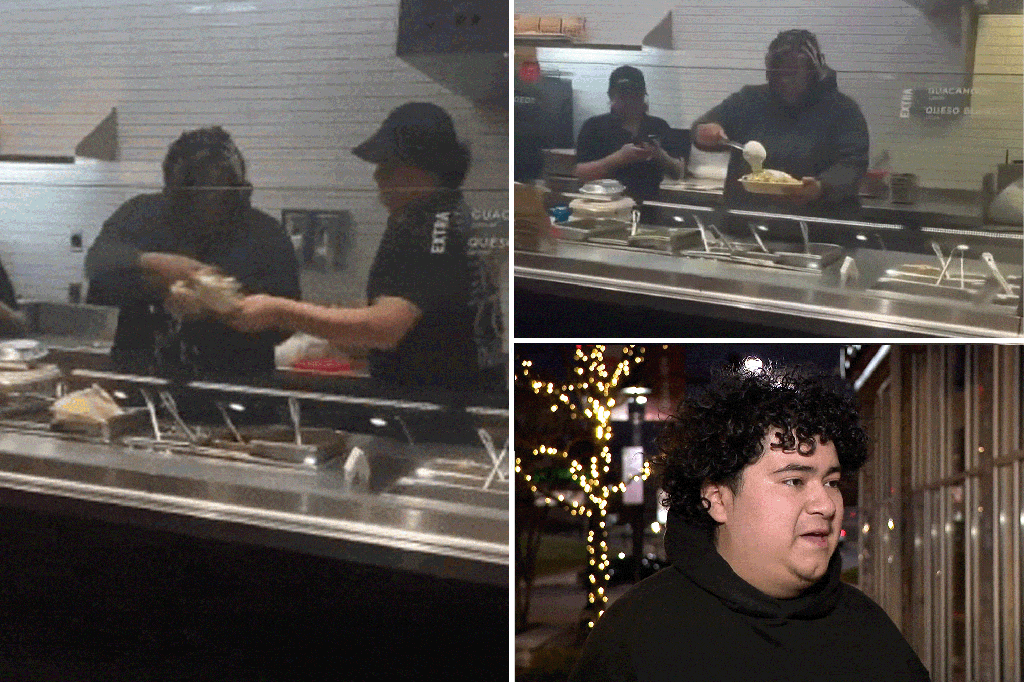This incident at a Washington, D.C. Chipotle restaurant highlights the escalating tension and, at times, violence that can erupt over customer service disputes. The incident began with a seemingly routine complaint: a customer, ordering through Uber Eats, claimed her burrito bowl was missing the double meat she had ordered and demanded a refund. However, the situation rapidly spiraled out of control, escalating from a verbal disagreement to a physical altercation and subsequent online threats.
The core of the dispute revolves around the customer’s assertion that her order was incorrect. Employee Roberto Hernandez maintains that he checked the order receipt and confirmed that double meat was not requested. He and the manager explained to the customer that they could not issue a refund directly, advising her to contact Uber Eats regarding the issue. This explanation, however, failed to appease the customer, who proceeded to bypass standard protocol by entering the area behind the counter and attempting to assemble her own corrected order.
The situation deteriorated further when Hernandez intervened, attempting to retrieve the bowl the customer was filling. The customer reacted by slapping Hernandez, scattering food across the work area. Hernandez, though admittedly angered by the assault, refrained from retaliating physically. He subsequently stated that the viral video of the incident, viewed millions of times online, is a constant and unwelcome reminder of the event. The customer’s actions did not end with the in-store altercation. She allegedly posted online threats against the restaurant staff, vowing to return and inflict violence upon them. These threats understandably caused fear and anxiety among the employees, further compounding the negative impact of the initial assault.
The customer’s perspective on the incident diverges significantly from the employees’ accounts. She claims that the employees were physically aggressive towards her first and that she merely threw the bowl in response. She also maintains that the circulated video does not show the complete interaction, implying that crucial context is missing. This conflicting narrative underscores the challenges in determining the precise sequence of events and assigning responsibility. The abbreviated nature of the video footage, combined with the emotional responses of those involved, contributes to the difficulty in establishing a definitive and unbiased account of the altercation.
The incident has prompted formal responses from both Chipotle and the customer. Chipotle has filed a police report regarding the alleged assault by the customer. Conversely, the customer has stated her intention to pursue legal action against the fast-food chain. These opposing legal actions highlight the seriousness of the situation and the significant impact it has had on both the employees and the customer involved. The case also underscores the broader issue of workplace safety in the service industry, as employees often face the risk of verbal and even physical abuse from dissatisfied customers.
This incident is unfortunately not an isolated occurrence in the fast-food industry. Similar altercations have been reported at various Chipotle locations and other fast-food chains. In one instance, a North Carolina Chipotle employee was physically assaulted by two customers over an extra charge for chicken. In another, employees at a Maryland Chipotle were subjected to having food and a chair thrown at them by irate customers. These repeated incidents point to a systemic issue related to customer behavior and the potential for violence in service industry settings. They highlight the need for better strategies to de-escalate conflicts, protect employees, and ensure a safe working environment. Furthermore, they raise questions about the broader societal factors contributing to such aggressive behavior and the role of businesses in mitigating these risks.
The Chipotle incident serves as a stark reminder of the potential for customer service disputes to escalate into violence. While the specifics of this particular case remain contested, the underlying issues of workplace safety, conflict resolution, and customer behavior demand attention. The incident raises important questions about the responsibility of both businesses and individuals to create a safer and more respectful environment within the service industry. Addressing these issues is crucial to preventing similar incidents from occurring in the future.










